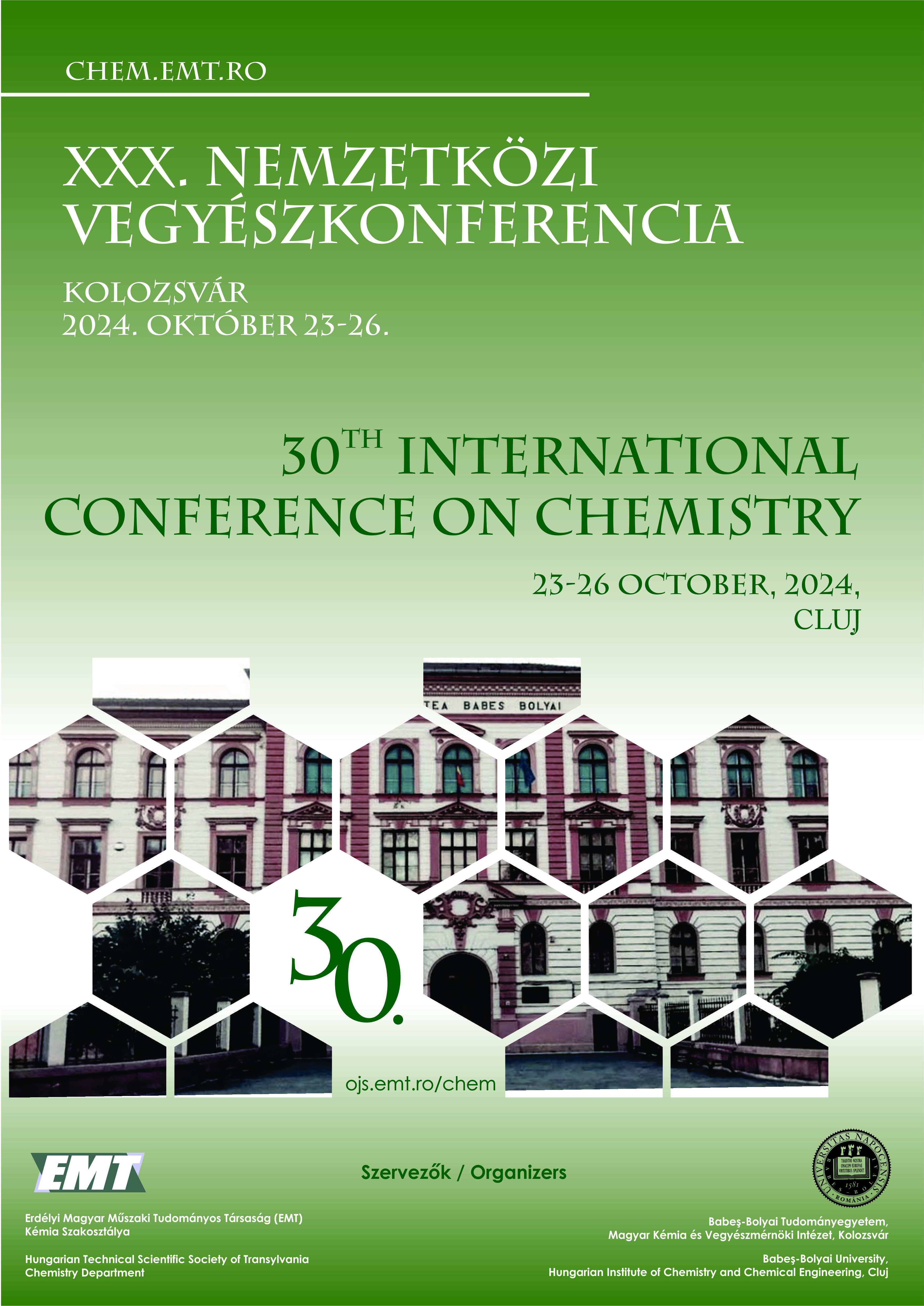Új platina(IV) kolplexek szintézise, szerkezet vizsgálata és alátámasztása elméleti számitásokkal, karbonsav és fenol ligandumokhoz való kapcsolásal.
Synthesis, structural insights, and computational studies of new platinum(IV) complexes with carboxylic or phenolic ligands
Keywords:
Pt(IV) prodrugs, carbonate-bridge-platinum(IV), DFT, Pt(IV) prodrogok, karbonát-híd-platina(IV)Abstract
Platinum-based anticancer therapies are associated with adverse effects, resistance due to drug efflux transporters, and limited targeting of biological mechanisms [1]. This work involved the synthesis and characterization of novel platinum(IV) complexes with carboxylic or phenolic ligands to address these challenges. Platinum(IV) complexes were synthesized from platinum(II) cisplatin-type frameworks utilizing therapeutic substances as ligands to provide multifunctional therapeutic candidates with promise as prodrugs, improving selectivity while minimizing toxicity and enabling theragnostic.
Biologically active inhibitors with hydroxyl groups were conjugated to platinum(IV) via a carbonate bridge, whereas those with carboxyl groups were directly incorporated as carboxylate ligands. A carbonate bridge facilitates the integration of hydroxyl-bearing ligands into platinum(IV) complexes by the derivatization of the pharmacophore with N,N′-disuccinimidyl carbonate (DSC) and subsequent reaction with the hydroxyl group. The molar ratio and temperature dictate the formation of mono- or di-carbonated platinum(IV) complexes [2].
ÖSSZEFOGLALÓ
A platinaalapú rákellenes terápiában ismert mellékhatások a gyógyszer-afflux transzporterek miatti rezisztencia és a biológiai mechanizmusok korlátozott hatása a kezelés során. [1]. A kutatás célja a platina(IV)-komplexek szintézise és jellemzése, karboxil- vagy fenolos ligandumok hozákapcsolásával, hogy túlszárnyalja az imént felsorolt melekhatásokat. A platina(IV)-komplexeket platina(II)ciszplatin típusú vázakból szintetizáltuk, a használt ligandumok javítják a szelektivitást, miközben minimalizálják a toxicitást és lehetővé teszik a teranosztikát.
A hidroxil csoportot tartalmazó ligandumok biológiailag aktív inhibitorokat képeznek karbonát-hídon keresztül konjugálva a platina(IV)-hez. Míg a karboxilcsoportosokat közvetlenül karboxilát ligandumként építették be. A karbonát-híd megkönnyíti a hidroxil-tartalmú ligandumok integrálását a platina(IV)-komplexekbe, az aktív hatóanyagal az N,N′-diszukcinimidil-karbonáttal (DSC), ami a hidroxilcsoportton keresztül történik. A mol arány és a hőmérséklet befolyásolható a mono- vagy di-karbonátos platina(IV)-komplexek kialakulása [2].


